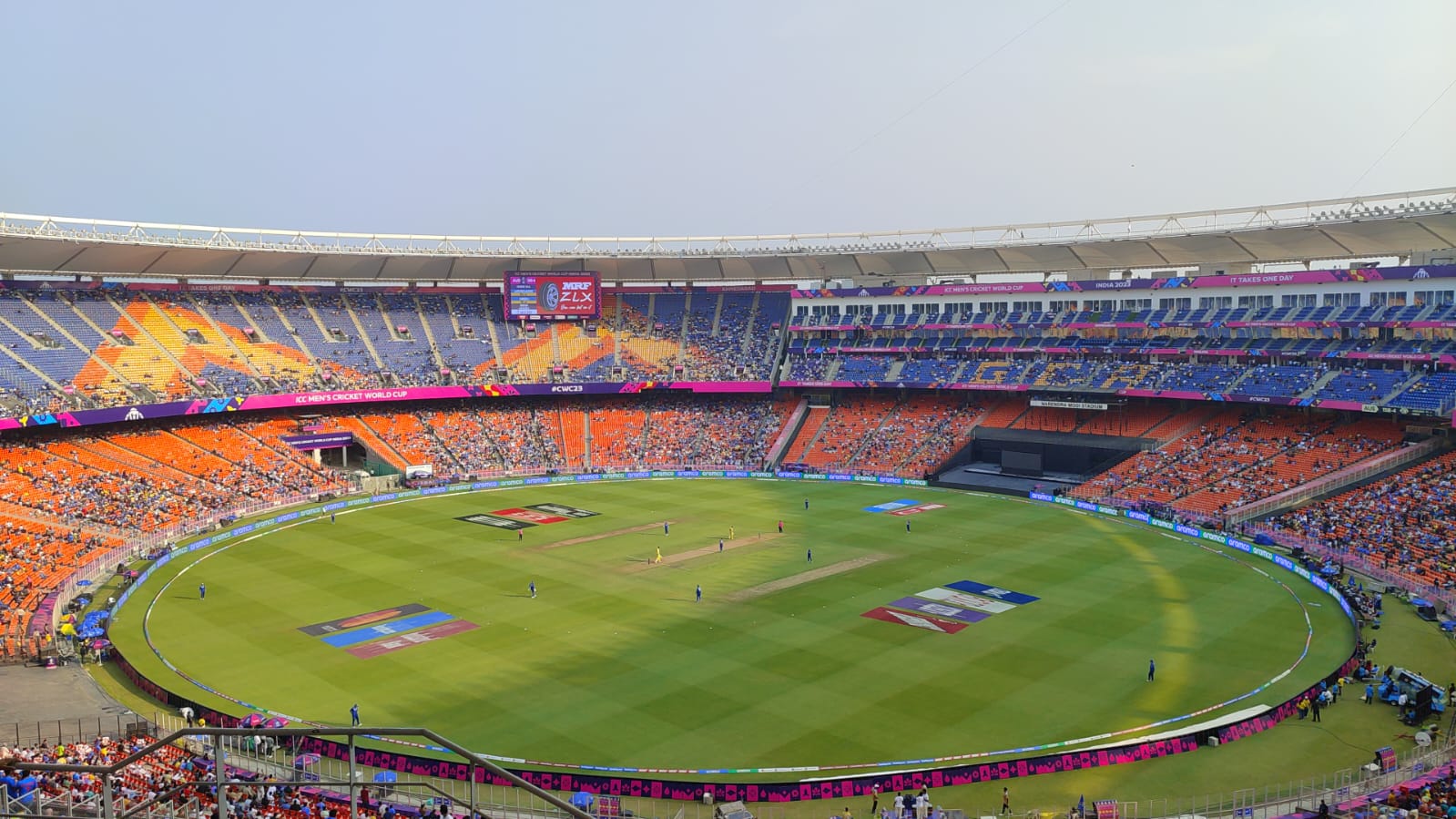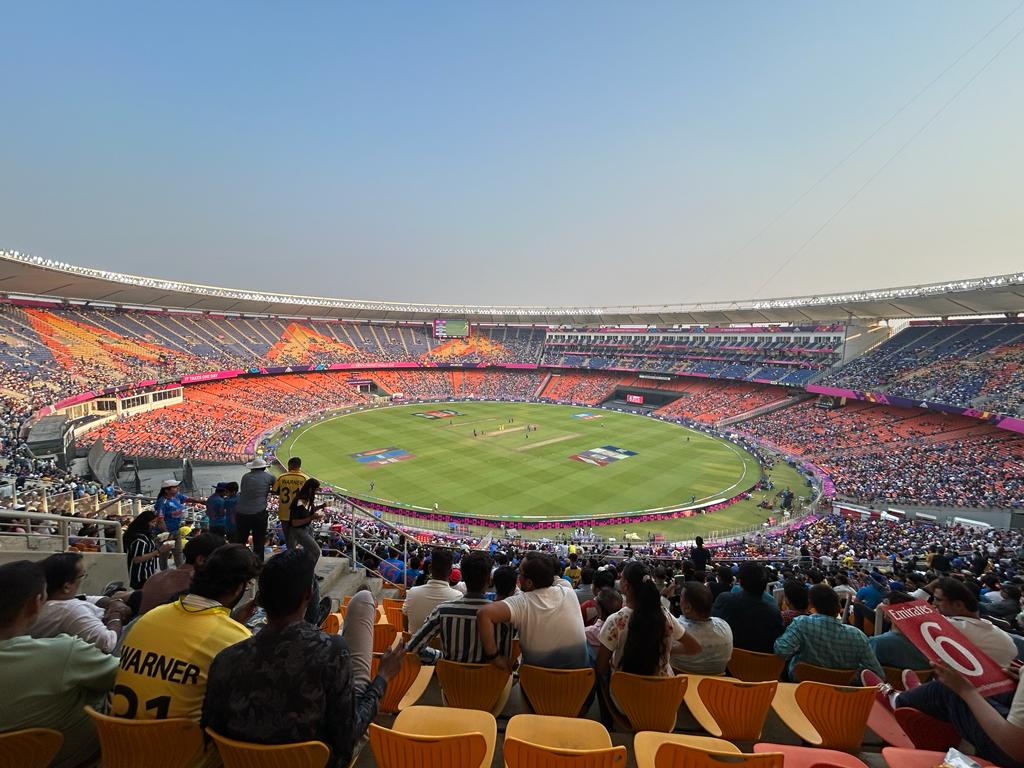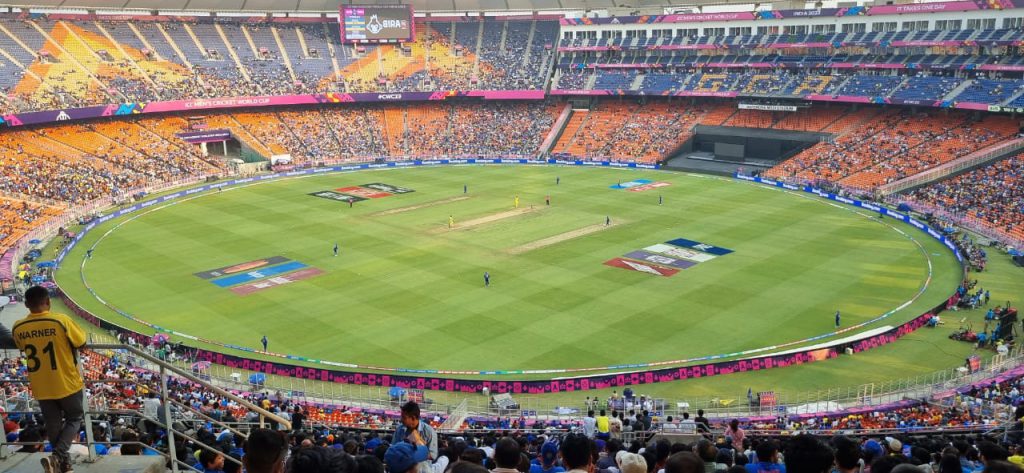Narendra Modi Stadium: Astounding Modern Architecture in Motera, Ahmedabad

Narendra Modi Stadium, formerly known as Sardar Patel Stadium, stands as a colossal tribute to India’s passion for cricket and architectural excellence. Located in Motera, Ahmedabad, this stadium has undergone a transformation that not only elevates its status as a premier cricketing venue but also places it among the largest and most advanced stadiums in the world. This article delves into the history, renovation, features, and significance of the Narendra Modi Stadium.
Historical Background
The original stadium was established in 1982 and was named after Sardar Vallabhbhai Patel, a key figure in India’s independence movement and the country’s first Deputy Prime Minister. It served as a prominent venue for numerous cricket matches, including international Test and One Day International (ODI) fixtures. Over the decades, the stadium witnessed historic moments, such as Sunil Gavaskar’s 10,000th Test run and Kapil Dev’s breaking of Richard Hadlee’s wicket record.
The Need for Renovation
Despite its rich history, the old stadium had begun to show signs of aging and inadequacy in accommodating the growing number of cricket enthusiasts. Recognizing the need for a world-class facility, the Gujarat Cricket Association (GCA) decided to undertake an ambitious project to demolish the old structure and rebuild it from the ground up. The vision was to create a state-of-the-art stadium that would not only meet international standards but also provide an unparalleled experience for players and spectators alike.
The Grand Renovation

The renovation project began in 2016 with an estimated cost of $100 million. The design and construction were overseen by Populous, a globally renowned architectural firm, in collaboration with India’s own L&T (Larsen & Toubro). The objective was clear: to construct the world’s largest cricket stadium with top-notch facilities.
Key Features of Narendra Modi Stadium
1. Capacity and Structure The Narendra Modi Stadium boasts an astounding seating capacity of 132,000, making it the largest cricket stadium in the world. The elliptical structure ensures that every spectator has an unobstructed view of the field. The stadium’s design incorporates a robust yet aesthetically pleasing look, combining modernity with functionality.
2. Facilities for Players and Spectators The stadium is equipped with 76 corporate boxes, four team dressing rooms, a state-of-the-art clubhouse, and an Olympic-sized swimming pool. The dressing rooms are designed to provide maximum comfort to the players, with modern amenities and direct access to the practice grounds.
3. Spectator Experience For the spectators, the stadium offers an unrivaled experience. There are three entry points to reduce congestion, and the seating is designed to provide maximum comfort. Additionally, the stadium has numerous food courts, restrooms, and drinking water facilities. The LED floodlights, installed on the roof, reduce shadows on the field, ensuring clear visibility for both players and spectators.
4. Advanced Infrastructure The stadium incorporates cutting-edge technology and infrastructure. It includes a high-tech media box, a 3D projection mapping system, and multiple LED screens. The drainage system is highly advanced, allowing the ground to be match-ready within 30 minutes after heavy rainfall.
5. Eco-Friendly Initiatives In line with modern environmental standards, the Narendra Modi Stadium has adopted several eco-friendly measures. Solar panels are installed to harness renewable energy, and the structure incorporates rainwater harvesting systems. The stadium also has provisions for waste management and recycling.
6. Connectivity and Accessibility Located just 15 kilometers from the Ahmedabad city center, the stadium is well-connected by road and public transport. The Ahmedabad Metro, which is under development, will further enhance connectivity, making it easier for fans to reach the venue. There are ample parking facilities to accommodate large crowds during major events.
Significance and Impact

1. A Hub for Major Events Since its inauguration, Narendra Modi Stadium has hosted several high-profile cricket matches, including the pink-ball Test match between India and England in 2021. The venue is also poised to host other significant events such as IPL matches, concerts, and political rallies, making it a multipurpose facility.
2. Boost to Local Economy The stadium’s construction and subsequent events have significantly boosted the local economy. It has created numerous job opportunities in construction, hospitality, and event management. The influx of tourists for major events also benefits local businesses, including hotels, restaurants, and transport services.
3. Symbol of Modern India Narendra Modi Stadium stands as a symbol of modern India’s ambitions and capabilities. It reflects the country’s dedication to sports and its readiness to invest in world-class infrastructure. The stadium not only enhances India’s reputation on the global stage but also inspires future generations to dream big.
4. Community Engagement The GCA and stadium authorities are committed to community engagement. Various cricket academies and training programs are conducted within the stadium complex, aiming to nurture young talent. These initiatives ensure that the stadium serves as a breeding ground for future cricket stars.
Conclusion
Narendra Modi Stadium in Motera, Ahmedabad, is more than just a cricket venue; it is a testament to India’s commitment to excellence and innovation. With its massive seating capacity, state-of-the-art facilities, and eco-friendly initiatives, the stadium sets new benchmarks in the world of sports infrastructure. As it continues to host major events and attract cricket fans from around the globe, the Narendra Modi Stadium will undoubtedly play a crucial role in shaping the future of cricket and sports in India.


